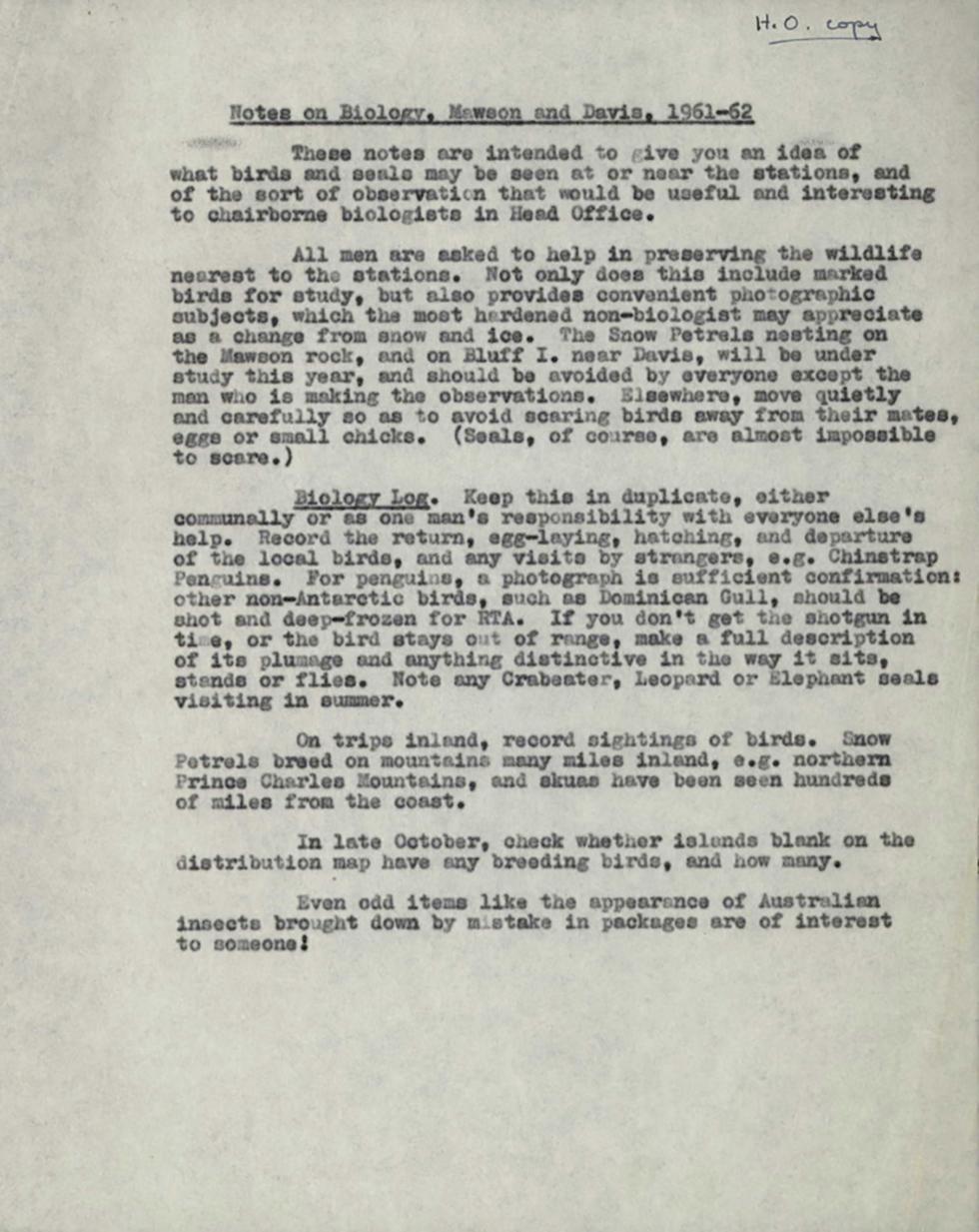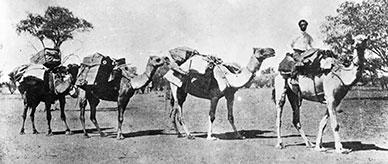


Transcript
[Handwritten note in pencil] H. O. [Head Office] Copy [end handwritten]
[Underlined heading] Notes on Biology. Mawson and Davis. 1961-62
These notes are intended to give you an idea of what birds and seals may be seen at or near the stations, and of the sort of observation that would be useful and interesting to chairborne biologists in Head Office.
All men are asked to help in preserving the wildlife nearest to the stations. Not only does this include marked birds for study, but also provides convenient photographic subjects, which the most hardened non-biologist may appreciate as a change from snow and ice. The Snow Petrels nesting on the Mawson rock, and on Bluff I. near Davis, will be under study this year, and should be avoided by everyone except the man who is making the observations. Elsewhere, move quietly and carefully so as to avoid scaring birds away from their mates, eggs or small chicks. (Seals, of course, are almost impossible to scare.)
Biology Log [underlined]. Keep this in duplicate, either communally or as one man’s responsibility with everyone else’s help. Record the return, egg-laying, hatching, and departure of the local birds, and any visits by strangers, e.g. Chinstrap Penguins. For penguins, a photograph is sufficient confirmation: other non- Antarctic birds, such as Dominican Gull, should be shot and deep-frozen for RTA [return to Australia]. If you don't get the shotgun in time, or the bird strays out of range, make a full description of its plumage and anything distinctive in the way it sits, stands or flies. Note any Crabeater, Leopard or Elephant seals visiting in summer.
On trips inland, record sightings of birds. Snow Petrels breed on mountains many miles inland, e.g. northern Prince Charles Mountains, and skuas have been seen hundreds of miles from the coast.
In late October, check whether islands blank on the distribution map have any breeding birds, and how many.
Even odd items like the appearance of Australian insects brought down by mistake in packages are of interest to someone!
About this record
There was no formal biology program until the mid 1970s. Expeditioners observed wildlife in their spare time. Even so there was awareness that wildlife should be preserved. This is page one of a 15-page report.
Related themes
Need help with your research?
Learn how to interpret primary sources, use our collection and more.




